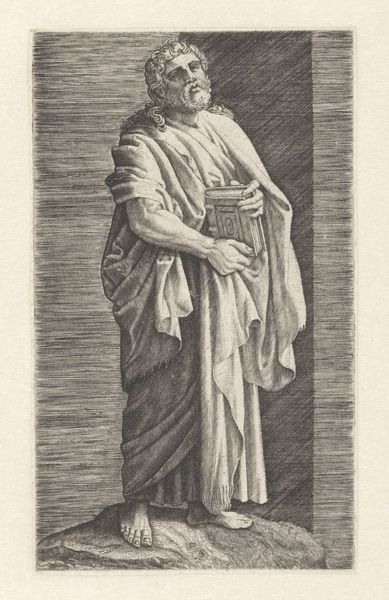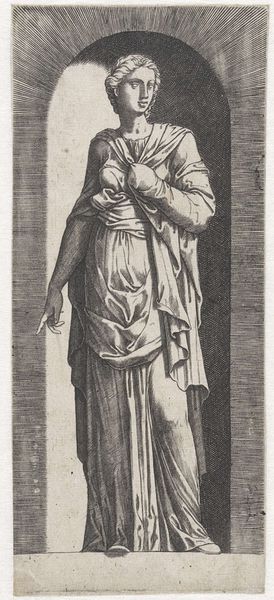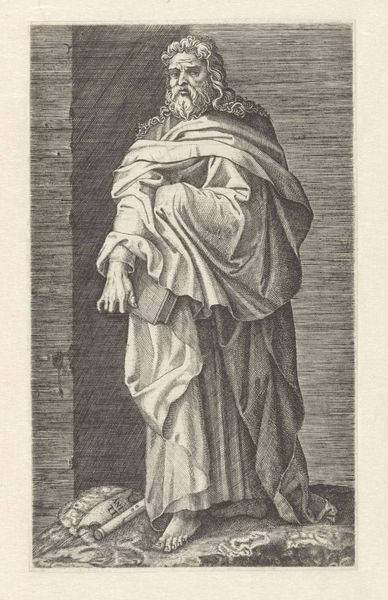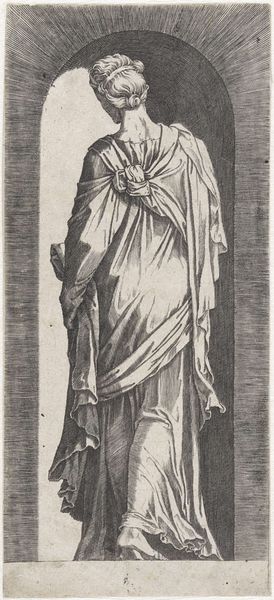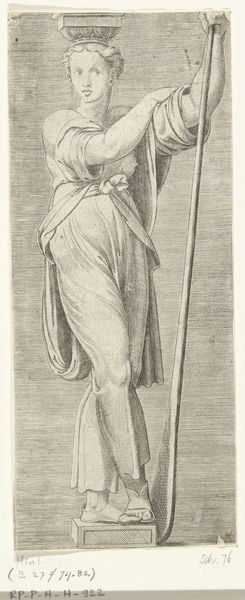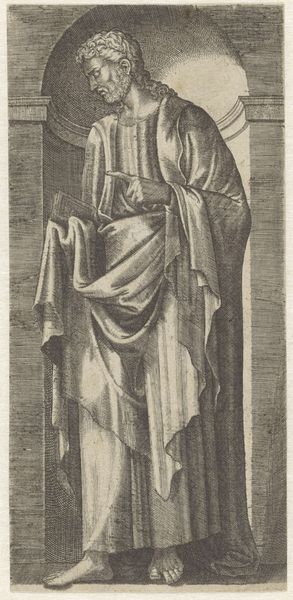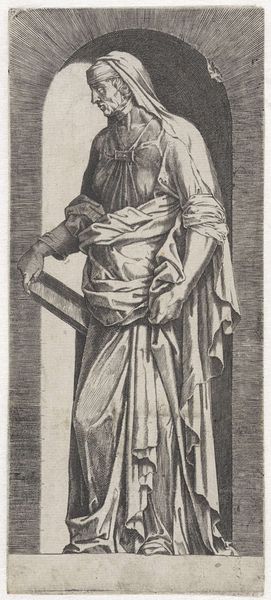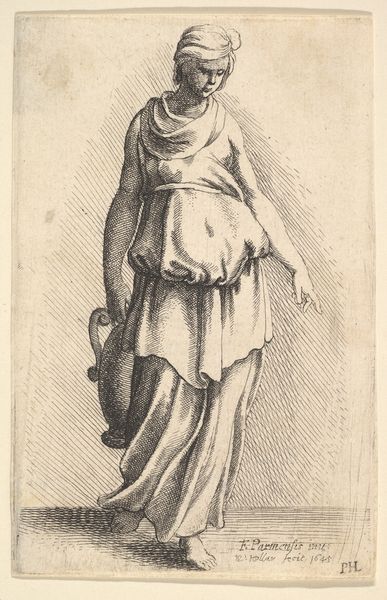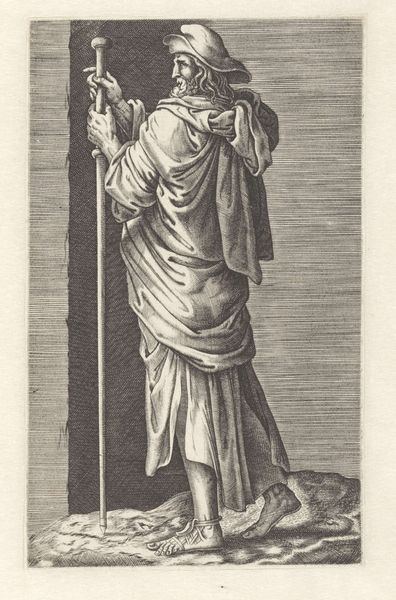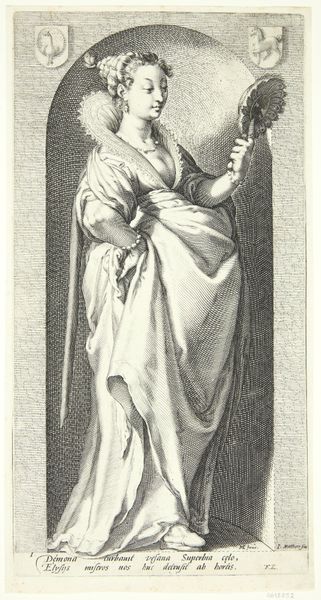
drawing, print, engraving
#
portrait
#
drawing
#
baroque
# print
#
pen illustration
#
pencil sketch
#
caricature
#
figuration
#
romanesque
#
pen-ink sketch
#
line
#
sketchbook drawing
#
portrait drawing
#
history-painting
#
engraving
#
realism
Dimensions: height 222 mm, width 92 mm
Copyright: Rijks Museum: Open Domain
Curator: This is "Standing Woman in Roman Clothing," an engraving created after 1664 and attributed to Jan de Bisschop, currently housed in the Rijksmuseum. Editor: Immediately, I’m struck by the flowing drapery and the figure's somber, almost melancholic expression. The linework, while delicate, also feels very precise. Curator: Indeed. Let's consider the materials—engraving allowed for multiple reproductions. How might this affect the dissemination of ideas about Roman virtue and female identity in Bisschop's time? Editor: Good question. Engravings made art more accessible. It's also interesting to observe how this form – easily copied – elevated the image to broader circulation than, say, an original drawing reserved for a collector’s cabinet. Curator: Precisely. Furthermore, consider the sitter's gesture—the hand placed delicately over the heart, combined with the classical garb, evokes ideas of modesty, piety, and perhaps even hidden strength, notions readily understood at the time through classical allegory. What do these images project about womanhood? Editor: From a making perspective, it all relies on the craftsman’s steady hand to build shadows with those fine lines. How much creative interpretation was de Bisschop engaging in as he translated it into engraving, how does this translate class ideology or making power dynamics. Curator: A compelling point, questioning where the original ideas originate and the cultural labour put behind these pieces. Did Bisschop seek to critique or merely reproduce existing ideals through his engraving, and where are the implications behind his art? Editor: Yes, exactly. Perhaps his art exists precisely in that tension of labor, consumption and dissemination. What can we find in Roman ideals, but can it give rise to discussions of our cultural history? Curator: I find that so important when encountering art that represents history, this artwork offers much of conversation to modern feminism through historical discourse. Editor: And understanding the engraving process itself—its materials, its means of production—adds another critical layer to appreciating not only its aesthetic value, but also its socioeconomic importance. Curator: It’s a powerful example of how studying process intersects with issues of gender, class, and reception, so much to think about for such small material!
Comments
No comments
Be the first to comment and join the conversation on the ultimate creative platform.

